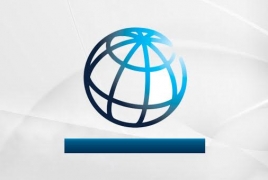Developing countries face series of tough challenges in 2015: WB June 11, 2015 - 12:42 AMT PanARMENIAN.Net - Developing countries face a series of tough challenges in 2015, including thelooming prospect of higher borrowing costs as they adapt to a new era of low prices for oil and other keycommodities, resulting in a fourth consecutive year of disappointing economic growth this year, says the WorldBank Group’s latest Global Economic Prospects (GEP) report, released Thursday, June 11. As a result, developing countries are now projected to grow by 4.4 percent this year, with a likely rise to 5.2 percent in 2016, and 5.4 percent in 2017. “Developing countries were an engine of global growth following the financial crisis, but now they face a moredifficult economic environment,” said World Bank Group President Jim Yong Kim. “We’ll do all we can to helplow- and middle-income countries become more resilient so that they can manage this transition as securely aspossible. We believe that countries that invest in people’s education and health, improve the businessenvironment, and create jobs through upgrades in infrastructure will emerge much stronger in the years ahead. These kinds of investments will help hundreds of millions of people lift themselves out of poverty.” With an expected liftoff in U.S. interest rates, borrowing will become more expensive for emerging and developing economies over the coming months. This process is expected to unfold relatively smoothly since the U.S. economic recovery is continuing and interest rates remain low in other major global economies. However, there are considerable risks around this expectation, the report argues. Just as the initial announcement of U.S. policy normalization caused turmoil in financial markets in 2013 – now referred to as the “taper tantrum” – the U.S. Federal Reserve’s first interest rate increase, or liftoff, since the global financial crisis could ignite market volatility and reduce capital flows to emerging markets by up to 1.8 percentage points of GDP, the report says. “Slowly but surely the ground beneath the global economy is shifting. China has avoided the potholes skillfully for now and is easing to a growth rate of 7.1 percent; Brazil, with its corruption scandal making news, has been less lucky, dipping into negative growth. With an expected growth of 7.5 percent this year, India is, for the first time, leading the World Bank’s growth chart of major economies. The main shadow over this moving landscape is of the eventual U.S. liftoff,” said Kaushik Basu, World Bank Chief Economist and Senior Vice President. “This could dampen capital flows and raise borrowing costs. This GEP provides a comprehensive analysis of what the liftoff may mean for the developing world.” This would especially hurt emerging markets with greater vulnerabilities and weakening growth prospects. For commodity-exporting emerging markets that are already struggling to adjust to persistently low commodity prices, or for countries experiencing policy uncertainty, a slowdown in capital flows would add to their policy challenges. “Unless emerging markets have taken the prudent policy steps to be fiscally and externally resilient, they may face significant challenges dealing with the turbulence and other fallout that could be associated with a Fed tightening,” said Ayhan Kose, the World Bank’s Director of Development Prospects. Lower prices for oil and other strategic commodities have intensified the slowdown in developing countries, many of which depend heavily on commodity exports. While commodity importers are benefiting from lower inflation, fiscal spending pressures, and import costs, low oil prices have so far been slow to spur more economic activity because many countries face persistent shortages of electricity, transport, irrigation, and other key infrastructure services; political uncertainty; and severe flooding and drought caused by adverse climate. “After four years of disappointing performance, growth in developing countries is still struggling to gain momentum,” said Franziska Ohnsorge, Lead Author of the report. “Despite auspicious financing conditions, a protracted slowdown has been underway in many developing countries, driven by shortages in agriculture, power, transport, infrastructure, and other vital economic services. This makes the case for structural reforms all the more urgent.” In high-income countries, in contrast, recovery is gaining momentum, as growth in the Euro Area and Japan picks up and the United States continues to expand, despite a weak start to the year. High-income countries are on course to grow by 2.0 percent this year, 2.4 percent in 2016 and 2.2 percent in 2017. The global economy is likely to expand by 2.8 percent this year, 3.3 percent in 2016 and 3.2 percent in 2017. Risks to the outlook for emerging and developing economies continue to weigh on growth. As some risks, such as the possibility of persistent stagnation in the Euro Area and Japan, have receded, new ones have emerged. Coinciding with the expected rise in U.S. interest rates, positive credit ratings for emerging markets are fading, especially in oil exporting countries, risks of financial market volatility are increasing, and capital flows are declining. An excessive appreciation of the U.S. dollar could curtail the recovery in the world’s largest economy, with adverse side-effects for U.S. trading partners around the world. Yerevan has dismissed Turkey’s demand to shut down the Armenian nuclear power plant as “inappropriate”. Armenia will loan 2.9 billion drams to Nagorno Karabakh (Artsakh), according to a draft government decision. The Ministry of Ecology and Natural Resources of Azerbaijan has “strongly condemned” Armenia’s decision. Kerobyan has said that for the first time in the history of Armenia, the volume of foreign direct investments amounted to about $1 billion. Partner news |